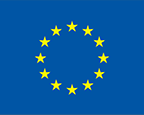Future research
ArcRisk science based research policy recommendations
The knowledge development, improvement of climate change impact understanding and development of assessment tools within the ArcRisk project meet the information requirements and policy aims of the European Commission, Arctic Council and other potential users of the project results.
The assessment tools developed and used in the ArcRisk project with databases, models, and monitoring systems form a very good basis for further quantitative analysis of impacts of climate variability and climate change on the variations in human health exposures through changes in contaminant origin, transport, fate and behavior in the environment and uptake and transfer through relevant food chains. This analysis would need new input through meeting the following recommendations for future research:
Better characterization and primary and secondary sources of POPs and more accurate quantification of current and future releases of POPs from these sources is needed for prediction of environmental exposure to these contaminants and interpretation of monitoring data. More information is needed on transformation products of POPs that may be formed under climate change and on their impact on the health of the Arctic environment and humans.
Further improvement of fate and transport modeling in the physical environment in order to consider in the models not only the direct effects of climate change (e.g., changes in temperature, ice and snow cover, precipitation, wind speed and ocean currents) on contaminants fate and behaviour but also indirect effects, e.g., alterations in carbon cycling, catchment hydrology, land use, vegetation cover, etc.
Improved bioaccumulation modelling in the ecosystems is needed for reducing the large uncertainties in quantification and evaluation of human exposure to contaminants in the Arctic. More effort is needed to generate datasets in which multiple species and abiotic media are sampled at the same time and analysed for organic pollutants.
Long-term environmental monitoring of POPs listed under the Stockholm Convention and measurements of concentrations in human milk and blood plasma are needed. In addition, monitoring of social changes, such as human dietary changes is also necessary in order to determine the possible changes of human exposure.
More information is needed on the human health effects of newly identified POPs, such as PFOS, PBDEs, HBCDs, and other substances with POP-like characteristics, particularly the effects on very young (including foetus) and elderly subgroups of population.
Initial results of meta-analysed health outcomes and POPs and selected heavy metals are presented within the ArcRisk project. It was concluded that to carry out coherent meta-analysis, current studies include too many uncontrollable variables which may eventually lead to misinterpretations of health hazards caused by pollutants in the Arctic. Harmonization of the data from large European bio-monitoring projects and the AMAP may improve the control over the variables. The current ArcRisk database format will be able to host such information.
New research should be undertaken to assess quantitatively the relationships between climate change impacts, change in fish distribution, and mercury contamination. This is one of the main drawbacks in current analysis of climate change impacts on human health in the context of mercury contamination in the Arctic.
In light of a reducing sea-ice cover under future climate change scenarios, it is important to note that one of the consequences will be changed momentum transfer from the atmosphere to the ocean. Further research needs to investigate the sensitivity of exposure patterns to this effect, in addition to potential changes of the large atmospheric pressure (and thus wind stress) distribution.
Knowledge and data gaps
Fate and transport modelling in the physical environment
The various multimedia environmental fate models used in the ArcRisk project represent the state-of-art for assessing the transport and fate of contaminants in the natural physical environment. These models have been shown to be capable of providing invaluable information from different perspectives. However, to date most studies that adopted these models and focused on either the Arctic or the Baltic physical environment have considered mainly the direct effects of global climate change, e.g., changes in temperature, ice and snow cover, precipitation, wind speed and ocean currents. These direct changes have been anticipated to have small impacts (within a factor of 2.0) on environmental concentrations of chemical contaminants relative to potentially important indirect changes, which can refer to alterations in carbon cycling, catchment hydrology, land use, vegetation cover, chemical emissions, etc. (Gouin et al., 2013). Indeed, one of the PCB case studies that used the BETR Research model indicated that the effect of decreasing emissions could overwhelm the global climate change induced effects on the environmental concentrations of PCBs, namely, the decreasing factors in the absolute concentrations are forecast to be several orders of magnitude, whereas the increasing factors as a result of global climate change induced effects are much smaller.
Our understanding of processes related to global climate change induced indirect effects is very much limited and associated with large uncertainties which make those processes more challenging to be assessed.
Bioaccumulation modelling in the ecosystem
There was sufficient information available to develop the basic structure of an Arctic marine food web model, e.g., for determining the food web composition, feeding relationships and species-specific properties. However, it is also clear that information for quantifying, evaluating and improving a specific food web model is often insufficient or associated with large uncertainties. This insufficiency is usually caused by the lack of good monitoring datasets for multiple species and the abiotic media. For example, for the bioaccumulation study documented in this report, seawater samples were not taken when the biological sampling was carried out in the year 2010, and the values for species-specific properties such as growth and feeding rates were taken from a much earlier study that was conducted around the year 2000. The causes of the discrepancy between measurements and model predictions are expected to be mainly associated with these deficiencies. As we are unable to fully evaluate our models of bioaccumulation in marine food webs under present-day climate conditions, we cannot hope to predict how global climate change may affect bioaccumulation and human exposure in the future with any accuracy. More effort is needed to generate datasets in which multiple species and abiotic media are sampled at the same time and analysed for organic pollutants. These more complete datasets will allow us to understand and more accurately model bioaccumulation in Arctic food webs. More basic research is also needed on how food webs and ultimately human diets will themselves respond to global climate change.
Key contaminant processes: knowledge and data gaps
ArcRisk has been able to take advantage of a number of field campaigns to provide an Arctic-wide assessment of contaminant occurrence/behaviour, particularly for PCBs – a legacy chemical. However, for emerging chemical contaminants then more systematic observations are required, particularly in the marine environment relating to their occurrence in seawater and understanding fate processes e.g. the transfer of chemicals from air or from meltwater runoff and subsequent uptake into biota.
A terrestrial deposition networks to compliment long-term air monitoring is required to assess the atmospheric input of new chemical groups over different seasons. This network should follow similar protocols and sampling equipment and be coordinated across Arctic regions.
Climatic aberrations are a growing feature of a warming Arctic, marked by an increased frequency of erratic weather events. Winter warming anomalies, for example, are growing in frequency and marked by periods (often days) of unseasonably warm air temperatures that result in rapid thawing of the winter snowpack followed by ice formation/encasement once temperatures decline again. The effect of these events on pollutant fate in the snowpack and subsequent meltwater runoff is unknown, but may result in ‘shock’ loading of an array of pollutants to terrestrial/tundra surfaces and freshwater systems. These short term events, possibly associated with flash flooding and soil/sediment erosion are poorly understood with regards to contaminant fate. Work in ArcRisk has found evidence of an ‘elution order’ from the snowpack following the onset of melt, but the effect of rapid melt events on contaminant behaviour and release are unknown.
Diminishing ice mass and ablation processes are affecting Arctic glaciers, particularly low-altitude/coastal glaciers. The potential for the remobilisation of contaminants previously deposited and stored in perennial snow/ice is high and some evidence of remobilisation is available through the coastal fiord fieldwork conducted in ArcRisk. A more thorough systematic assessment is now required targeting residues in other matrices rather than water, such as lake/fjord sediments and sentinel biota. This could be conducted in aquatic systems that are impacted by glacial melt and compared to non-glacial fed systems (within geographic proximity to each other) to conclusively demonstrate evidence of melt remobilisation processes and their impact on aquatic biota.
Process-based studies are required in the marine cryosphere to examine chemical enrichment in seaice and to quantify the role of seaice as a source of chemicals to ice-associated biota. Research conducted in ArcRisk shows tantalising evidence that seaice serves to accumulate and even amplify chemical contaminants relative to seawater, but the impact of this enrichment is unclear. Furthermore, the role of ice-brine and the age of the ice appear to be important parameters affecting chemical accumulation and fate. The overall change in Arctic marine ice volume with climate change and the storage and processing of contaminants within ice certainly warrants further research.
The use of select contaminants as markers of metabolic processes in marine biota is promising and could be used to distinguish climate-change related perturbations on specific marine foodwebs. Work in ArcRisk has examined enantiomers of chiral OC pesticides and revealed that enantiomeric selective processes are varied both temporally and spatially in different zooplankton populations. Physical perturbations to the zooplankton habitat could result in differing enantiomeric signatures depending on key metabolic processes (e.g. stressed organisms may reveal different signatures relative to non-stressed organisms). This area of research has tremendous potential to probe subtle changes in biological functioning as a result of habitat change.
The processing of country-foods prior to human consumption appears to be influencing the concentrations and profile of contaminant residues, particularly for newer chemicals like PFAS, and this is demonstrated in ArcRisk for fish (e.g. smoked vs. unsmoked filets). The implications for food processing on human dietary intake of contaminants needs further assessment and this may vary depending on population type and geographic region. The local influence of coastal Arctic towns on contaminant levels in locally-caught marine biota needs further investigation, particularly for newer chemical substances like PFAS which may arise in coastal fiord systems through local runoff/activities in addition to long-range transport processes.






















